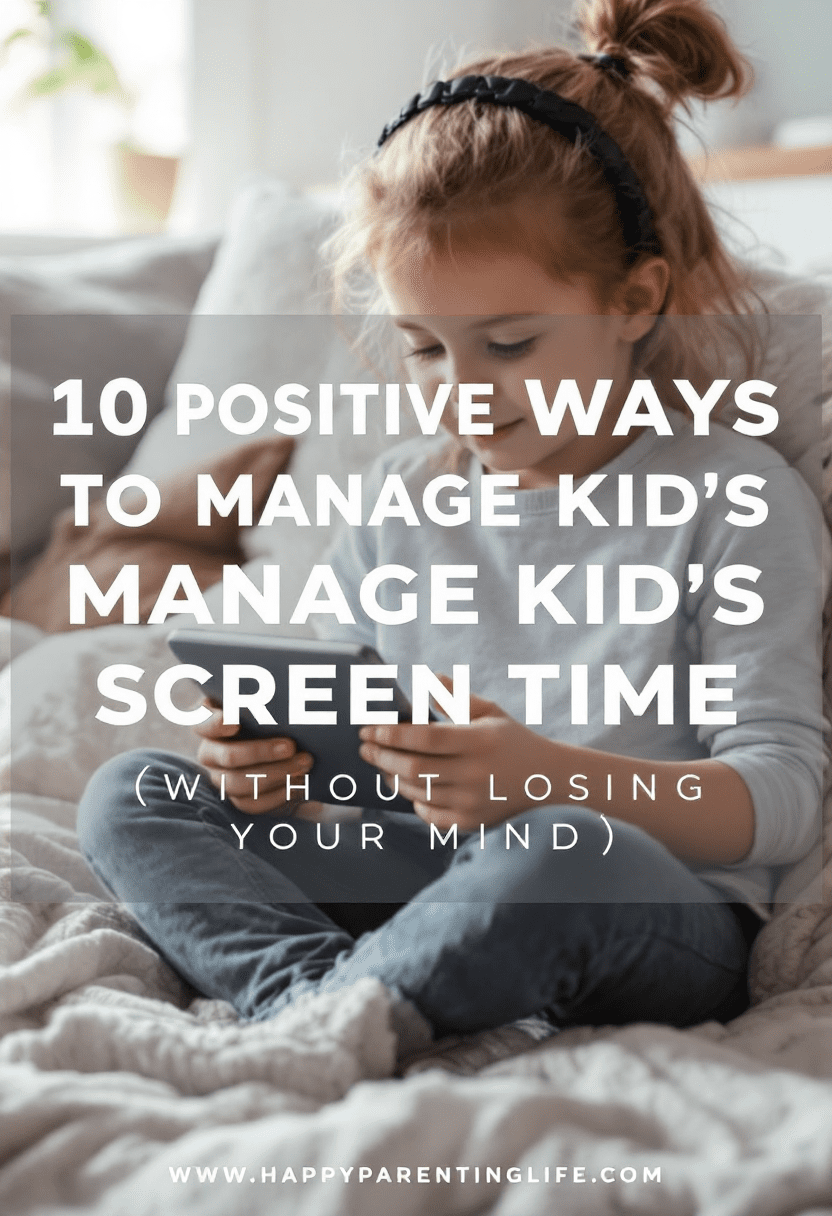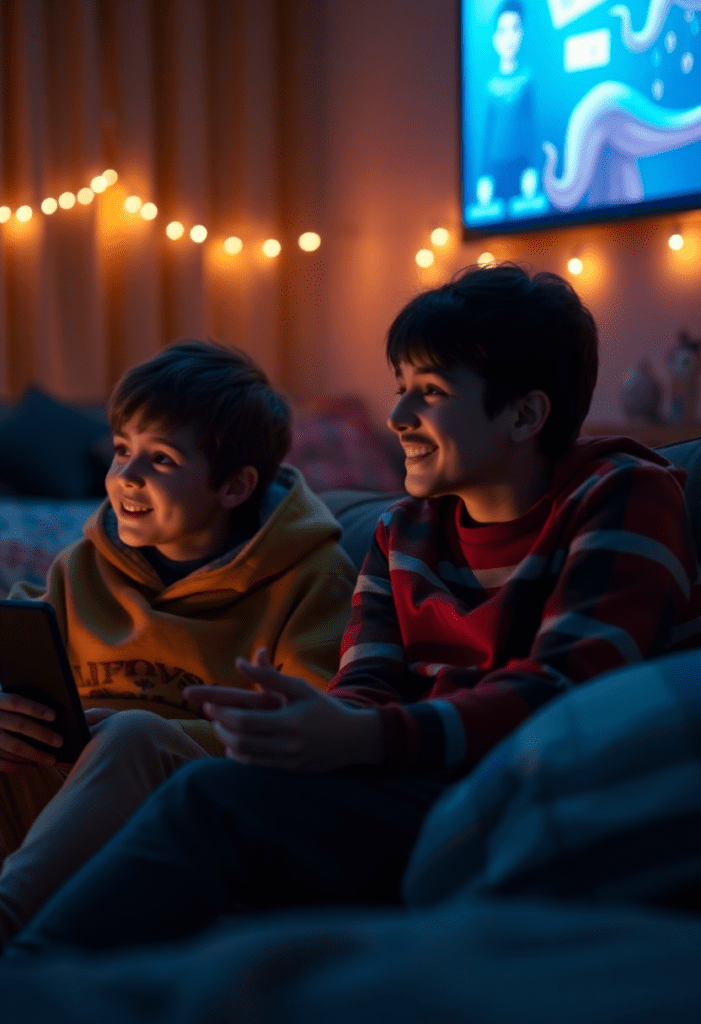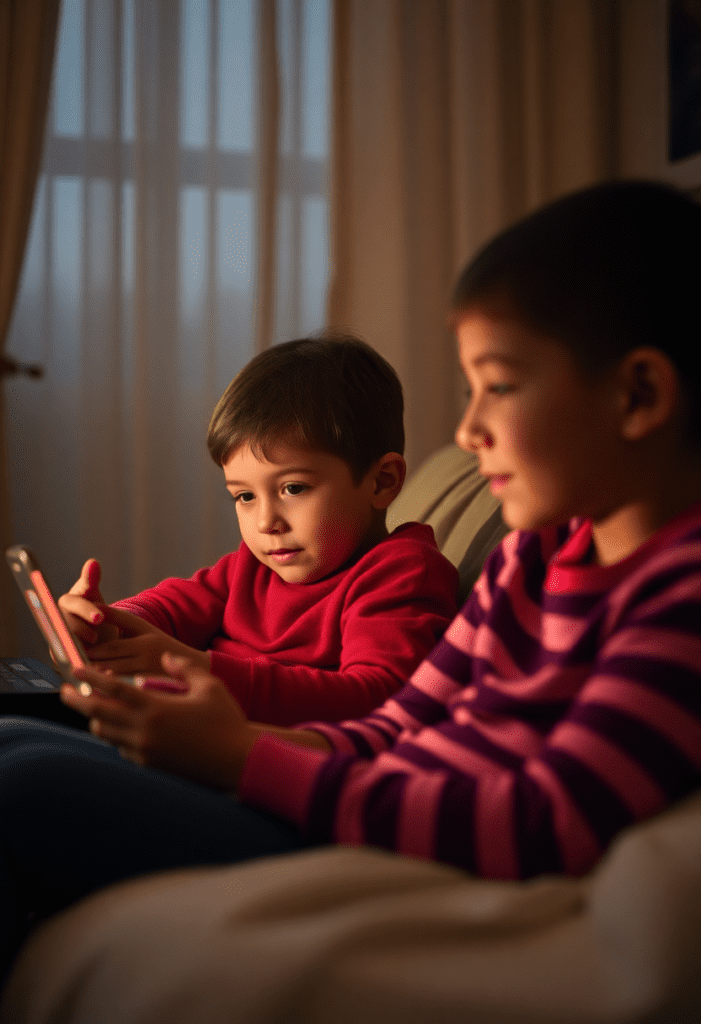
Hey friend — if you’ve ever panicked about your kid’s screen time (like, “OMG they’ve been on the tablet for how long?”), you are so not alone. Screens are everywhere, and let’s be real: they’re a lifesaver sometimes. But they can also become a total monster if you don’t keep them in check.
Trust me, I’ve been there — wrestling the guilt of “too much screen time” while desperately needing five minutes to finish my own coffee. ☕ So how do you balance reality with reasonable limits? Buckle up, because I’ve pulled together 10 positive, practical ways to manage kids’ screen time — without turning your house into a digital war zone.
1. Make Screen Time Part of the Routine

Ever noticed how kids do better with routines? Screens can fit into that, too.
- Choose specific “screen times” during the day
- For example: 30 minutes after lunch or 20 minutes before dinner
- Keep it predictable so they know when to expect it
By putting screens on the schedule, you avoid endless whining and power struggles — golden, right?
2. Model Your Own Screen Habits

Look, kids copy us. If you’re doom-scrolling TikTok all day, they’ll want to do the same.
Try these:
- Put your phone away at mealtimes
- Show them how to take breaks
- Talk about what you’re watching or reading
Little eyes are always watching (creepy, but true 😅).
3. Co-Watch Whenever Possible

I know, I know — you’d rather fold laundry than watch Blippi again. But co-watching can work wonders:
- You can help them process what they see
- Pause and ask questions (“What do you think happens next?”)
- Point out positive messages
This turns screen time into bonding time instead of zombie time.
4. Use High-Quality Content
Not all screen time is created equal. Seriously.
Focus on shows and apps that teach or inspire:
- PBS Kids
- National Geographic Kids
- Storytelling games
Pro tip? Read reviews or try them yourself first. You’ll weed out the mindless junk.
5. Set Clear Limits and Stick to Them

Kids test boundaries — it’s their job. 😉 So your job? Stay consistent.
- Use timers (your phone or a kitchen timer works)
- Give a heads-up like “5 more minutes!”
- Stick to the rule, even if they tantrum (I know, it’s hard)
When kids know the boundary won’t move, they eventually accept it.
6. Encourage Offline Play

Screens are easy, but hands-on play is magic. Keep options ready:
- Craft supplies
- Blocks and Legos
- Dress-up costumes
- Puzzles
Rotate toys to keep things fresh, so your kid doesn’t always default to a screen.
7. Make Physical Movement Part of the Deal
FYI, a sedentary kid equals a cranky kid. IMO, everyone wins if you keep them moving.
For every chunk of screen time, follow up with movement:
- Dance breaks
- Backyard play
- Quick family walks
Screen + movement balance = happier kiddos (and saner parents).
8. Set Up Tech-Free Zones
Designate certain places as no-screen zones:
- Bedrooms (way better for sleep)
- The dinner table
- The car during short rides
This sets up a culture that screens aren’t always invited.
9. Involve Kids in Setting Rules

Kids love feeling heard. So why not get their buy-in?
- Ask: “What feels fair for daily screen time?”
- Let them help make the rules
- Create a family tech contract
They’re way more likely to stick to limits they helped set — trust me.
10. Show Grace (and Be Flexible)

Real talk: life happens. Maybe you’re sick, or stuck in a traffic jam, or just need a moment of peace. If your kid has more screen time than usual, it’s not the end of the world.
One day of extra tablet time doesn’t undo your whole routine. Just reset tomorrow, no shame or guilt required. ❤️
Why Managing Screen Time Matters
Ever wondered why we even stress about this? It’s simple:
- Too much screen time impacts sleep
- Messes with social skills
- Can make kids way more irritable
A healthy relationship with screens sets them up for better habits in the future.
My Own Screen-Time Wins and Fails
Oh boy, let me confess: I once let my toddler watch cartoons for 3 hours straight so I could finish a big work deadline. #NoRegrets — but I paid for it later with a sugar-high-style meltdown.
But I also started a tradition of family movie Fridays — we pick one movie, make popcorn, and snuggle. The kids look forward to it, and so do I. 🙂
Common Screen-Time Questions Answered
Should I ban screens altogether?
Nope. They’re part of our world. Balance and boundaries work better than banning.
What’s the best daily limit?
Most experts recommend 1–2 hours max of high-quality screen time for kids over 2.
Is educational screen time okay?
Yes! Just be sure it’s truly educational, not just labeled that way for marketing.
Extra Tips for Tough Screen-Time Days
Let’s be real — kids push limits. Some days, you’ll feel like a screen-time cop. Here’s how to make those days easier:
- Stay calm if they argue
- Repeat your rules without drama
- Offer fun alternatives right away
- Walk away for a minute to cool down
You’ve got this!
Family Screen-Time Contract (Yes, It Helps!)
Consider creating a simple screen-time contract:
- How long each kid can watch
- Where they can use devices
- Rules for turning them off
Have everyone sign it. Put it on the fridge. Instant accountability — and fewer battles.
Screens Don’t Have to Be the Enemy
Screens aren’t evil. They’re tools — and sometimes lifesavers for us busy parents. The key is keeping their role in check so they don’t overrun family life.
Think of it this way: you’re raising kids who will someday manage their own tech use. Teaching them balance now sets them up to do just that later.
My Final Thoughts (From One Tired Parent to Another)
If you’ve ever felt guilty about screen time, I’m here to say: give yourself a break. Parenting is hard enough without adding shame to the mix.
Focus on balance, stay consistent, and remember to laugh — your kids won’t remember the extra half-hour on the iPad, but they will remember you being present, kind, and calm.
So yeah, manage their screen time. But also manage your own expectations. 😉
You’ve got this, friend. ❤️
Read More: 12 Bedtime Routine Hacks That Actually Work for Toddlers



